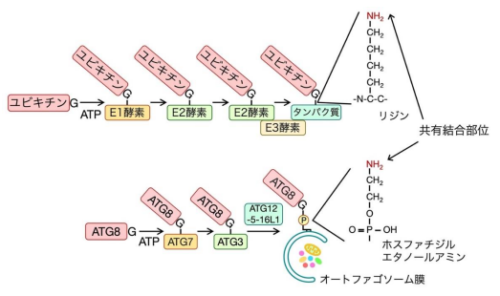合成生物学の飛躍的進歩により、植物由来の化学療法剤ビンブラスチンが新たな供給源となる Thanks to a leap forward in synthetic biology, the plant-derived chemotherapy vinblastine has a new source
2022-08-31 ローレンスバークレー国立研究所(LBNL)
ビンブラスチンとビンクリスチンは、モノテルペノイド・インドールアルカロイド(MIA)と呼ばれる植物性化合物の一群に属し、多くの有用な医療用途がある。しかし、この化合物は原子構造が複雑であるため、合成化学では再現できないことが多い。そのため、キースリングがブレイクスルーする前のアルテミシニンの生産と同様、ビンブラスチンやビンクリスチンの製造には、前駆体分子を抽出するために自生する植物を大量に栽培・収穫することが必要である。1グラムのビンブラスチンとビンクリスチンをつくるには、それぞれ500キログラムと2000キログラムのマダガスカル産シソ科植物の乾燥葉が必要なのだ。
この研究は、酵母が自然に作る2つの分子をビンブラスチンの前駆体であるカタランチンとビンドリンに変換する30の酵素ステップを含む、これまでで最も長い生合成経路を微生物細胞工場にリファクタリングしたものを紹介している。
<関連情報>
- https://newscenter.lbl.gov/2022/08/31/anti-cancer-drug-now-made-by-microbes/
- https://www.nature.com/articles/s41586-022-05157-3
抗がん剤「ビンブラスチン」製造のための微生物サプライチェーン A microbial supply chain for production of the anti-cancer drug vinblastine
Jie Zhang,Lea G. Hansen,Olga Gudich,Konrad Viehrig,Lærke M. M. Lassen,Lars Schrübbers,Khem B. Adhikari,Paulina Rubaszka,Elena Carrasquer-Alvarez,Ling Chen,Vasil D’Ambrosio,Beata Lehka,Ahmad K. Haidar,Saranya Nallapareddy,Konstantina Giannakou,Marcos Laloux,Dushica Arsovska,Marcus A. K. Jørgensen,Leanne Jade G. Chan,Mette Kristensen,Hanne B. Christensen,Suresh Sudarsan,Emily A. Stander,Edward Baidoo,Christopher J. Petzold,Tune Wulff,Sarah E. O’Connor,Vincent Courdavault,Michael K. Jensen & Jay D. Keasling
Nature Published:31 August 2022
DOI:https://doi.org/10.1038/s41586-022-05157-3

Abstract
Monoterpene indole alkaloids (MIAs) are a diverse family of complex plant secondary metabolites with many medicinal properties, including the essential anti-cancer therapeutics vinblastine and vincristine1. As MIAs are difficult to chemically synthesize, the world’s supply chain for vinblastine relies on low-yielding extraction and purification of the precursors vindoline and catharanthine from the plant Catharanthus roseus, which is then followed by simple in vitro chemical coupling and reduction to form vinblastine at an industrial scale2,3. Here, we demonstrate the de novo microbial biosynthesis of vindoline and catharanthine using a highly engineered yeast, and in vitro chemical coupling to vinblastine. The study showcases a very long biosynthetic pathway refactored into a microbial cell factory, including 30 enzymatic steps beyond the yeast native metabolites geranyl pyrophosphate and tryptophan to catharanthine and vindoline. In total, 56 genetic edits were performed, including expression of 34 heterologous genes from plants, as well as deletions, knock-downs and overexpression of ten yeast genes to improve precursor supplies towards de novo production of catharanthine and vindoline, from which semisynthesis to vinblastine occurs. As the vinblastine pathway is one of the longest MIA biosynthetic pathways, this study positions yeast as a scalable platform to produce more than 3,000 natural MIAs and a virtually infinite number of new-to-nature analogues.


